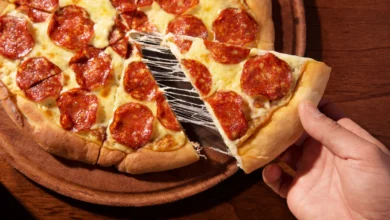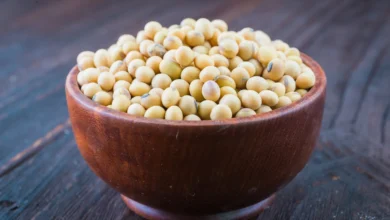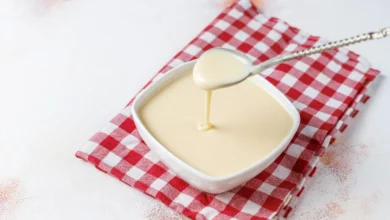Freezing Beets: A Step-by-Step Guide for Raw & Cooked

Fresh beets are delicious, but storing them for extended periods can be tricky. Freezing is a fantastic solution to preserve those deep, uniformly-red beets for later!
Contents
- How to Freeze Beets
- Prepare Your Beets For Freezing
- Tips for Preparing and Storing Beets
- Ingredients and Equipment
- Freezing Cooked Beets
- Freezing Raw Beets
- How to Freeze Roasted Beets (Including Freezing for Roasting Later)
- Tips for Roasting Delicious Beets
- How to Freeze Chopped Raw Beets
- Frozen Beet Recipes
- Freezing Beets for Smoothies
- Nutritional Information
- Frequently Asked Questions
How to Freeze Beets
Let’s cover how to prepare them for the freezer so you can always have those sweet, earthy flavors on hand.
Prepare Your Beets For Freezing
- Choose Carefully: The key to delicious frozen beets is starting with the best. Select young, tender beets – older ones can get tough. Look for firm, vibrantly colored roots free of blemishes.
- Initial Prep: Wash the beets thoroughly, removing dirt and debris. Sort them according to size. This helps with even cooking times. With a sharp knife, carefully trim the tops, leaving about 1/2 inch of stems. Trim the tap root as well. This lessens potential bleeding of color during the cooking process.
- Time to Cook: Boiling water is a classic way to prepare them. The cooking time depends on their size. For small beets, expect about 25 to 30 minutes, or until they are easily pierced with a fork. Medium beets might need 45 to 50 minutes.
- Cool Down: Once tender, promptly transfer the beets to cold water. This halts cooking and preserves their vibrant color.
- Finishing Touches: After they’re cooled, it’s time to peel, remove any remaining stem and tap root, and slice or dice as desired.
- Pack and Freeze: Place your beets into freezer-safe containers or bags. Leave about ½-inch headspace for expansion. Seal them tightly and freeze for long-term storage.
Important Note: From my experience, freezing is best for cooked beets. Trying to freeze raw beets can lead to a less-than-ideal texture when thawed.
Tips for Preparing and Storing Beets
- Stain-Proof Your Prep: Beets are delicious but can be messy! When slicing or cutting beets into chunks, consider wearing disposable gloves while working. Those vibrant juices will stain your fingers bright pink and can also discolor your kitchen counter or floor. Keep your workspace neat, and immediately clean up any spills to remove stains. A quick wipe with a bleach-water solution works wonders on bleach-safe surfaces, but always test an inconspicuous spot first to avoid ruining your favorite kitchen equipment.
- Don’t Toss Those Greens! Beet leaves are edible and nutritious. Add them to a salad or saute them with some olive oil and garlic for a quick, flavorful side dish. They’re similar in texture to greens like kale or Swiss chard. Just be sure to wash them thoroughly to remove any gritty soil, and be aware that the stems can be a bit tough. You may want to cut them out before cooking.
- Prep, Then Freeze: If you find yourself with a surplus of beets and won’t use them right away, cut off the greens and store them separately. Left attached, the greens will go bad quickly in the fridge. They last much longer when stored apart.
- Freshness Matters: For the best flavor and texture, use fresh beets as seasonally as possible. Look for ones within their growing season, as they’ll often be more tender and flavorful than ones stored for an extended period.
- Variety in Storage: Beets store well, but it helps to keep them separate from other veggies and fruits in your fridge. This can help your beets last longer and prevent them from affecting the ethylene (ripening) process for other produce nearby.
Ingredients and Equipment
Freezing beets requires minimal equipment. Here’s what you’ll need:
The Star of the Show: Beets! Feel free to pick your favorite variety: classic red, vibrant golden, or visually striking chioggia.
Storage Solutions:
- Freezer bags: Standard Zip-top, freezer-friendly bags are easy and accessible.
- Reusable alternatives: Reusable silicone bags (like Stasher bags) are great for reducing waste.
Prep Tools:
- Cutting board: For trimming and dicing or slicing into cubes.
- Knife: A sharp knife for all your cutting needs.
Cooking Essentials (if needed):
- Pot: A large pot if you choose to boil your beets.
- Bowl: A bowl for an ice bath is useful if blanching before freezing.
Freezing Cooked Beets
A common question is, “Can I freeze beets raw?” The answer is technically yes, but I highly recommend cooking them before freezing for the best texture and to save time later. Here’s how:
Prep Your Beets:
- Trim the roots, stems, and leaves. Clean them well.
- Thoroughly wash the beets under running water, removing any dirt or debris.
Cook to Perfection:
- Choose your preferred method: Roasted Beets in Foil, Instant Pot Beets, boiling, or steaming on the stovetop.
Cool and Peel:
- Let the beets cool completely.
- Gently peel away the skin with your fingers.
Package and Freeze:
- Transfer the beets to freezer-safe bags.
- Carefully seal, add a label with the date, and place in your freezer to enjoy for up to six months.
Freezing Whole Beets
- Cooked whole beets, rather than diced ones, freeze exceptionally well. They thaw beautifully and can be cut up into your desired shape and size after thawing. This is ideal if you’re unsure how you’ll use them later.
Prepping for Specific Dishes: If you know you enjoy frozen, cubed beets in dishes like borscht, soups, or curry, then pre-cutting before freezing is best.
Freezing Raw Beets
While raw beets can be frozen, they won’t last quite as long, and might not fully retain the same quality as cooked counterparts. However, if you absolutely want to freeze raw beets, I recommend blanching them for a few minutes to help preserve their nutrition and texture.
Is it better to freeze beets raw or cooked?
While you can technically freeze beets raw, they’re prone to becoming soggy when frozen and thawed. For the best texture and flavor, I suggest cooking them first before freezing. Boiling for about 25 minutes, or until they’re easily pierced with a knife, then transferring them to an ice-water bath to cool is a classic preparation method.
Blanching vs. No Blanching: Blanching beets before freezing helps preserve nutrition and texture, but it’s not strictly necessary. If you plan to use frozen raw beets within a few months for cooked dishes, you can skip the blanching step.
How to Blanch and Freeze Raw Beets
Prep Your Beets:
- Trim the roots, stems, and leaves and clean them well.
- Rinse the beets under running water to remove dirt.
Peel and Cut:
- Peel the beets and dice them into cubes.
Blanching is Key:
- In a large pot, add water and bring it to a vigorous boil.
- Drop the cubed beets into the boiling water and cook for 3 to 4 minutes.
- Quickly transfer the beets to a bowl of ice water to immediately halt the cooking process.
- After letting them sit for a few minutes, thoroughly drain and pat dry.
Flash Freeze and Store:
- Spread the blanched beets in a single layer on lined baking sheets.
- Place the baking sheets in the freezer and allow the beets to freeze completely. This should take approximately an hour.
- Transfer to bags, seal, label, and store in the freezer.
Important Notes:
- Frozen raw beets are best used within 6 months, but for best results, try to use them within 3 months.
- Since the texture may change slightly, thawed raw beets work best in dishes where they’ll be cooked further.
How to Freeze Roasted Beets (Including Freezing for Roasting Later)
If you’re a fan of roasted beets (and if you haven’t tried them yet, you’re missing out!), you’ll love how easy it is to freeze them. Roasted beets have a fantastic depth of flavor that’s perfect for so many dishes. Here’s how to do it for both pre-roasted beets and freezing for later roasting:
Tips for Roasting Delicious Beets
Choose Your Beets
While any beet works, I find medium beets are best for roasting. If you love the visual appeal of Chioggia beets, those are a fun favorite too – just remember, the stripes fade a bit with roasting.
Prep and Roast
Drizzle your beets with a bit of olive oil and maybe even some balsamic vinegar. Spread out on a baking sheet and roast for about 15–30 minutes at 350 °F (176 °C). They’re done when just barely done – easily pierced with a fork.
Cool and Freeze
Let your beets cool and then transfer them to the freezer. Once they’re frozen, pop them in a freezer bag or container. This way, you can easily grab portions as needed.
Freezing Beets for Roasting Later
- You can freeze raw beets specifically for roasting later. While they might take slightly longer to cook from frozen, it’s still a time-saver.
- Prep your beets by trimming and peeling. You can also cut them into desired sizes before freezing.
- Place on a baking sheet and freeze quickly. Once frozen, store them in a freezer-safe bag or container. Roast directly from frozen.
Reheating Options
Oven: Place in a roasting pan with a sprinkle of your favorite seasoning and roast for about 20 minutes, covered.
Microwave: Heat in a covered dish for about 5 minutes for quick use.
Bonus: Roasting beets is messy, but it’s worth it! If you’d rather avoid the cleanup, you can often find pre-roasted beets in the produce section. However, for ultimate flavor control, consider doing it yourself. Remember, you can also cut beets into your desired size and peel them before roasting – the skin will slip off easily afterward.
How to Freeze Chopped Raw Beets
Although freezing cooked beets offers the longest storage time and best texture retention, you can also freeze them raw after chopping them into smaller pieces. This approach is handy if you frequently use beets in cooked dishes like soups, borscht, or roasted vegetable medleys. Just be aware that they might lose some of their crispness compared to fresh beets.
You have the option to blanch your chopped beets before freezing. While not essential, this quick pre-cooking step can help them retain color, nutrients, and a slightly better texture when thawed. The blanching process is the same as we discussed earlier. However, if you’re planning to use your frozen beets within a few months for cooked applications, blanching may not be necessary.
Here’s how to do it:
- Prep Your Beets: Remove the skin from your beets and chop them into small, uniform pieces. This will help them freeze more evenly. Feel free to use whichever beet variety and size you prefer.
- Package for Protection: Place the chopped beets into freezer-safe bags or airtight containers. The key to success is minimizing their exposure to air. Using a vacuum sealer is ideal for ensuring the best quality and preventing freezer burn. If you don’t have one, remove as much excess air as you can from regular freezer bags before sealing them.
- Don’t Forget the Greens: If you want to save those nutritious beet tops, chop them and freeze them separately. They’re delicious added to smoothies or cooked down in savory dishes.
Frozen Beet Recipes
The beauty of frozen beets is their versatility! Here are some ideas for using them:
Using Frozen Raw Beets:
- Hot Dishes: Blanched or unblanched frozen raw beets are perfect to add directly from the freezer into soups, borschts, and curries. Try recipes like Coconut Beetroot Curry or a hearty Slow Cooker Borscht for delicious, comforting meals.
- Roasting: You can even roast frozen beets, though they might take slightly longer than fresh. Simply toss them with olive oil, seasoning, and spread on a baking sheet.
Using Frozen Cooked Beets:
- Thawed: Thaw frozen cooked beets in the refrigerator overnight. They’re fantastic in salads, added to cooked dishes, or blended into smoothies. Just keep in mind, frozen and thawed cooked beets might be slightly more watery than freshly cooked ones. You can gently squeeze out excess water before adding them to recipes.
- Baked Goods: Surprisingly, frozen and thawed cooked beets work in some baked good recipes! Just be mindful that these recipes might call for adjustments due to the higher water content.
Freezing Beets for Smoothies
Frozen beets are a fantastic way to add a boost of nutrients and vibrant color to your smoothies. Here’s how you can get the best results:
- Cook First: For the smoothest texture, always cook your beets before freezing. Boiling, roasting, or steaming all work well.
- Portion for Convenience: Consider freezing pre-portioned amounts of cooked beets specifically for smoothies. This saves time when you’re ready to blend.
- Thaw or Use Frozen: You can add frozen cooked beets directly to your blender or thaw them partially for a slightly less icy smoothie.
Nutritional Information
| Nutrient | Amount |
| Serving | 1 beet |
| Calories | 35 kcal |
| Carbohydrates | 8 g |
| Protein | 1 g |
| Fat | 0.1 g |
| Saturated Fat | 0.02 g |
| Polyunsaturated Fat | 0.05 g |
| Monounsaturated Fat | 0.03 g |
| Sodium | 64 mg |
| Potassium | 267 mg |
| Fiber | 2 g |
| Sugar | 6 g |
| Vitamin A | 27 IU |
| Vitamin C | 4 mg |
| Calcium | 13 mg |
| Iron | 1 mg |
RELATED: Can You Freeze Brownies
RELATED: Can You Freeze Tiramisu
Conclusion
Whether you prefer them roasted, boiled, or even frozen raw, beets are a nutritious and delicious root vegetable worth adding to your meals. Freezing extends their shelf life significantly, allowing you to enjoy their earthy sweetness for months to come. Remember, for optimal texture and flavor, it’s best to freeze beets after cooking. Now that you’re armed with the know-how, stock your freezer and enjoy the vibrant taste of beets all year round!
______________________________
Frequently Asked Questions
Is it better to freeze beets raw or cooked?
While you can technically freeze beets raw, they’re prone to becoming soggy when frozen and thawed. For the best texture and flavor, I suggest cooking them first before freezing. Boiling for about 25 minutes, or until they’re easily pierced with a knife, then transferring them to an ice-water bath to cool is a classic preparation method.
Can you freeze cooked beetroot in vinegar?
Yes, you can freeze cooked beetroot in vinegar. This is a traditional preservation method, especially popular for pickled beets. Be aware that freezing may slightly alter the texture of the beets, making them a bit softer. For best results, use a freezer-safe container and leave some headspace for expansion. Thaw frozen pickled beets in the refrigerator before using.
What is the best way to preserve beets?
To preserve beets for long-term storage, freezing is a fantastic option. Here’s the process:
- Prepare your beets by cooking them with about ½ inch of stem intact to minimize color bleed.
- Cool in cold water, then remove the stems, taproot, and skin.
- Cut into your desired slices or cubes.
- Package in freezer bags or containers, leaving ½-inch headspace, and freeze.
How do you use frozen beetroot?
The way you use frozen beetroot depends on how you froze it:
- Frozen cooked beets: These don’t need additional cooking – simply thaw and add to recipes. Roast, boil until tender, or even freeze pre-cooked and uncovered, then use defrosted cooked wedges in stews or bakes.
- Frozen raw beets: You’ll need to cook them before using.
Can you freeze raw beets for juicing?
Yes! It’s best to use young beets, whether small or large, for freezing for juicing. Regardless of the type of beet (red, purple, orange, or striped), follow these steps:
- Freeze beets the next day after purchasing.
- Remove the greens, leaving 1-2 inches of stem attached.
- Wash beets thoroughly and place them in a freezer-safe bag or container. They can last for up to 3 months in the freezer.
Do beets freeze well?
Absolutely! They hold up well in the freezer. Whether cooked or raw, they’ll retain their flavor and nutrition when properly frozen in a sealed bag or container.




